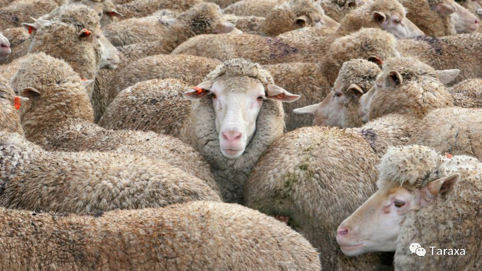Advanced Edition Interpretation | What is a blockchain?
Author: Steven Pu
Disclaimer: This article introduces the high-level concept of blockchain technology as a whole, because any blockchain technology will exhibit different characteristics.
What is a blockchain?
In general, blockchain technology provides a mechanism for entities to submit statements, agree on facts, and replicate records. It may be a bit esoteric to say this, let's explore these three functions one by one.
- The first strand of the blockchain: Jia Nan Zhi Zhi turned gorgeous on Nasdaq
- Brief description of the oracle (Oracle) system: the lighthouse of the DeFi world
- The currency circle "剿匪": the fund is checked, the exchange is full, and the "catch" has just begun.
■Submission statement

Telegraph: Early instant messaging system
Entities (called nodes) in the network need to exchange information. This information generally includes statements such as "I am Bob" or "Alice gives Bob a coin." To validate these statements, the node relies on an encrypted method to prove that the author is himself.
For example, a node received such a content: "Alice gives Bob 1 coin." This sentence is only valid when Alice is the author, because only Alice can spend Alice's money. In a blockchain network, each statement carries a cryptographic signature—a signature that is almost impossible to spoof simple verification (because it is super expensive) so that the node can verify the author of each statement and its identity.
In short: blockchain enables entities to submit statements that are difficult to forge and easy to verify.
■ Achieve consensus on the facts

Voting is a form of explicit consent
Nodes on a blockchain network do not need to be trusted. In other words, each node can think for itself without trust or rely on the help of anyone else.
In an ideal world, the fact that a node sees is the fact that all nodes see it. Sadly, the real world we live in is full of danger and malice. Nodes can be faulty, disconnected from the network, hacked, or openly committed. The differences in these issues have spawned various versions of "facts."
For example, Node A thinks he has 10 coins, but the other nodes in the network think he has only 5. When he attempts to pay 10 nodes to Node B, Node B and the other nodes will consider the transaction invalid and will be rejected. Node B then says to node A: "I never received the 10 coins you owe me."
To ensure proper operation, blockchain nodes need to agree on the facts of a certain version. The blockchain network relies on a set of rules of the consensus algorithm to help the nodes agree. Some rules are implicit, such as Bitcoin's "longest chain principle"; some are clear, such as Taraxa's committee voting system.
In short: Entities on a blockchain network follow a set of rules to agree on the submitted statements.
■Copy record

Clone: Make the same copy
Each node on the blockchain network maintains a copy of the current and historical records of the network. Storing the current record enables the node to independently validate all submitted statements.
For example, if you do not have a record for node A, you cannot verify any statements related to node A. The storage history can help guide the new node so that it can independently verify how the current record came from.
In short: each entity has a copy of the network record.
Interesting attribute
The blockchain exhibits a wide variety of attributes, and although they are not unique to the blockchain technology, they combine to create a unique blockchain.
■ Non-tamperable attributes:
Because each node has a record, and constantly agree on new content. Therefore, unless most nodes on the entire network compromise at the same time, it is difficult to attack or change these records. It is difficult to tamper with blockchain records, which gives it a seemingly untamed feature.
■ Order:
Stored records are arranged in a specific order, which is an important attribute for network nodes to reach consensus. An unchangeable order means that conflicting statements cannot be recorded (for example, the same currency is used twice), which is critical for any honest and rigorous recording system.
■ Commitment attributes:
Entities sign verifiable statements through an encryption algorithm that becomes a set of unremovable (ie, unchangeable), chronological commitments. Various types of agreements, such as financial contracts, can be implemented and executed safely without the risk of counterparty.
These attributes combine to create a direct peer-to-peer decentralized ecosystem that creates a network that does not require third parties to ensure transaction integrity.
We will continue to update Blocking; if you have any questions or suggestions, please contact us!
Was this article helpful?
93 out of 132 found this helpful
Related articles
- The sentient beings under the blockchain boom: Some people enter the market and some people sneak into the nose
- Getting started with blockchain | What is the difference between a mine pond and a mine?
- How much is the blockchain virtual bank?
- Policy reshuffle is intensified: the crisis and new life of virtual currency exchanges
- Ping An’s account book is submitted to the prospectus, and the “blockchain first share” dispute opens.
- There is no “coin” in the blockchain advocated by the state, but the four big dividends or the ten-year encounter
- Blockchain Weekly: The currency circle is on the high side of supervision, and the first share of the mining machine will go to the US this week.






